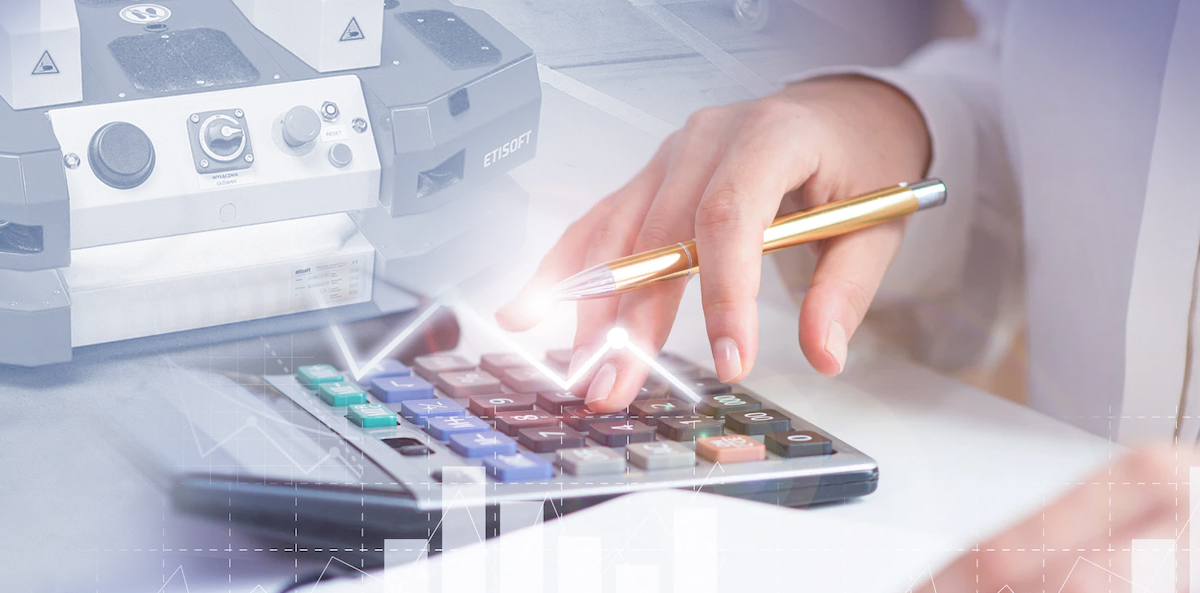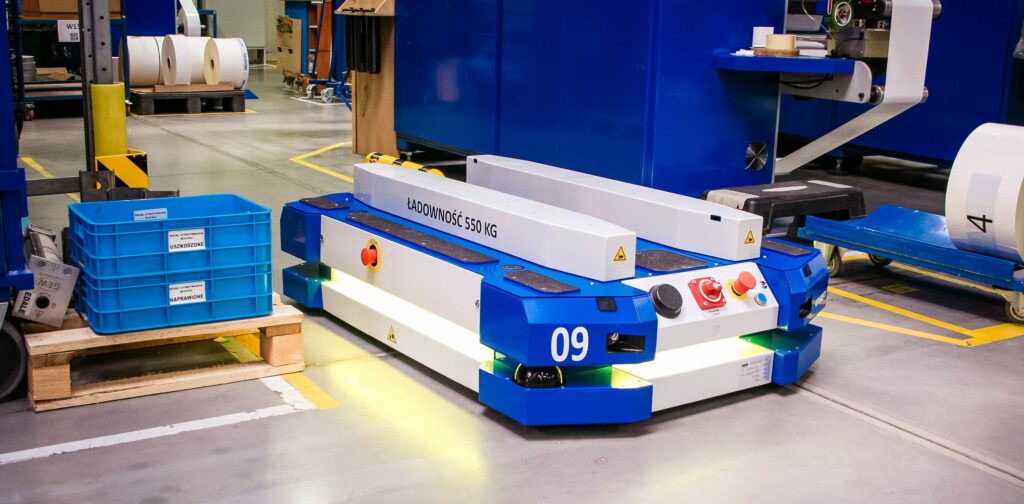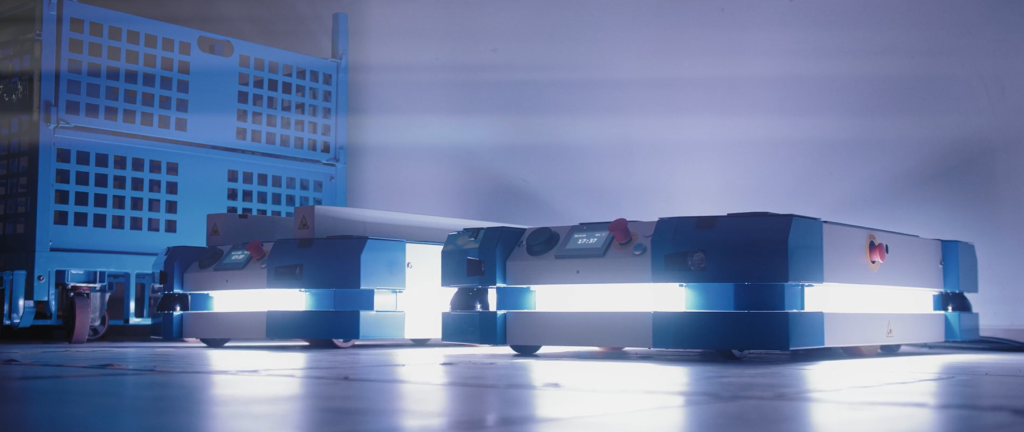
The price of the AGV/AMR system. What influences it?

Performance and the price of the AGV/AMR system
One of the key factors influencing the price of the system. The number of logistics units that must be delivered per time unit determines most system parameters. Robots can move at the speed of up to around 5km/h. Each docking, stopping, obstacle avoidance, loading means additional time which influences the frequency of deliveries. The number of transports that must be carried out per time unit determines the number of the required robots, and these are usually of the greatest significance in system pricing. The price of the AGV/AMR system – what else determines it?
Logistics carrier, of what we transport
A EUR-pallet, a KLT container or maybe a customized platform or a wheeled basket? The logistics carrier is of key importance in terms of selecting the right robot or developing the right design additions for it to pick up and put down the carrier. This determines whether the supplier can offer a ‘shelf’ product or whether they will have to interfere with the design of the robot or create special interfaces compatible with the carrier. As you can easily guess, this has a significant impact on the cost of the system.
Logistics point, or where from and to which point we carry out transport
Dock, dock with a roller conveyor, floor or maybe rack? The type of logistics point also impacts on the selection of the right robot. Some robots make it possible to lift logistics carriers directly from the floor, others from docks, and still others from racks. The prices of robots transporting wheeled baskets differ from the prices of robots transferring pallets from floor to floor. The logistics point has also influence on the choice of robot or fleet of robots, which translates into the price as well.

Number of logistics points
Each logistics point visited by a robot translates into the time it takes to complete its mission. Docking is one of the most time-consuming activities for a robot. A longer mission time reduces performance of the mission, which, in turn, translates into the number of robots that need to be used to operate the process. Many dockings also mean more energy consumed and thus more time spent at the charging station.
Length, width, shape, and other features of the track
The distances that robots must cover affect the efficiency of the entire system, therefore the track length will have an impact on the number of the robots used. This will obviously translate into the price of the entire system. The available track width may also determine the type of the robot used and its maximum speed. It may turn out that narrow passages will significantly influence the safety of system usage which will result in a decreased speed of the robots. This, in turn, results in a decrease in the efficiency of the intralogistics system. The level of complexity of the track also impacts on the amount of essential programming work, including especially the optimization of algorithms which manage the movement of the robot fleet.
As you can see, the price of the AGV/AMR system depends on very many factors. Is it a solution for your business?
